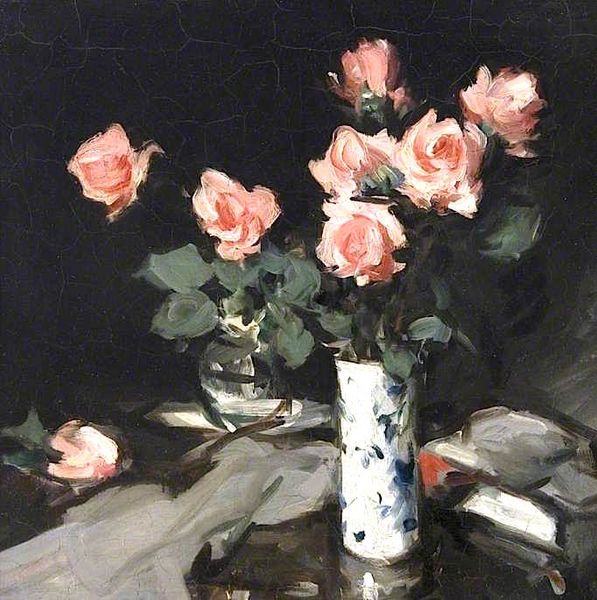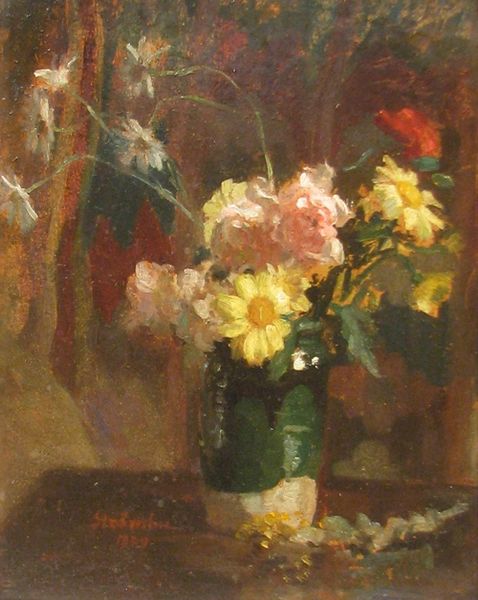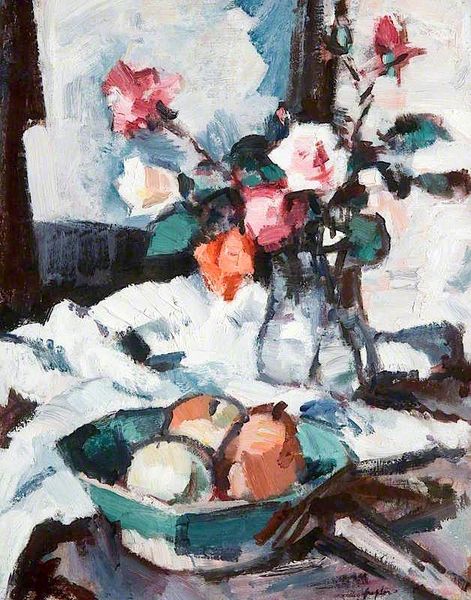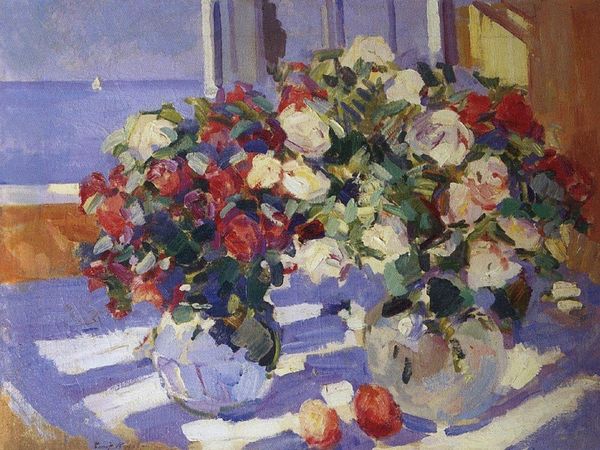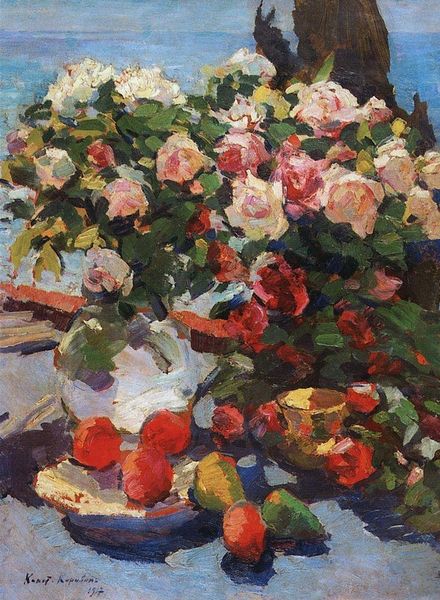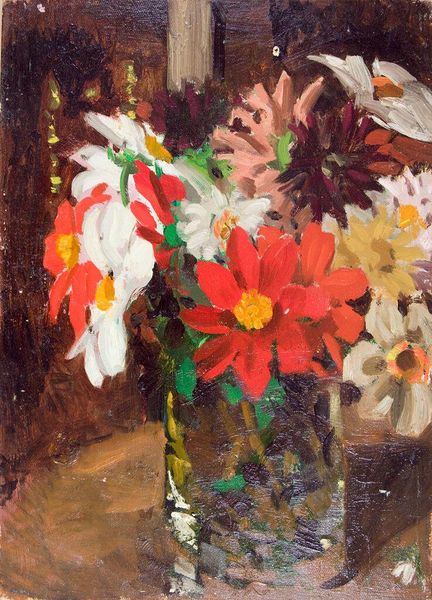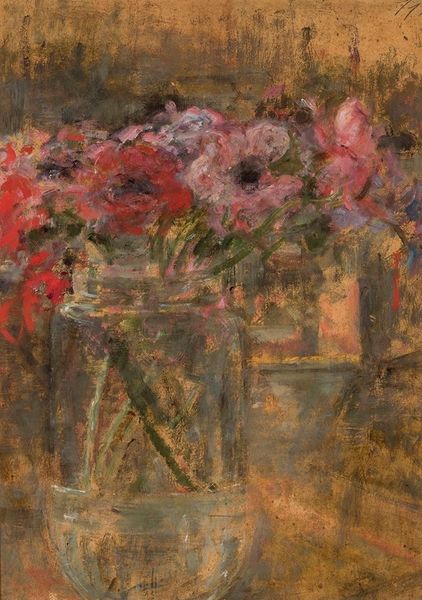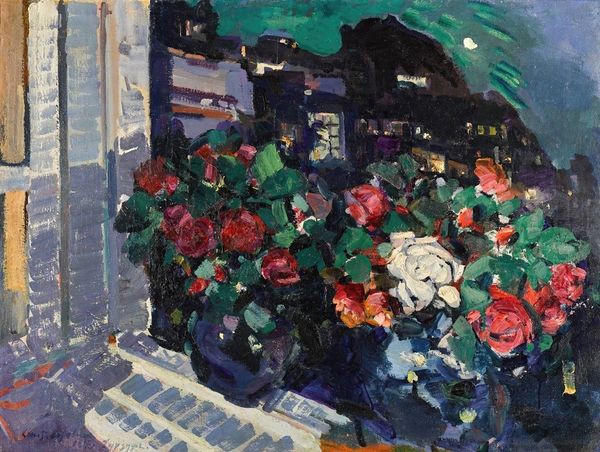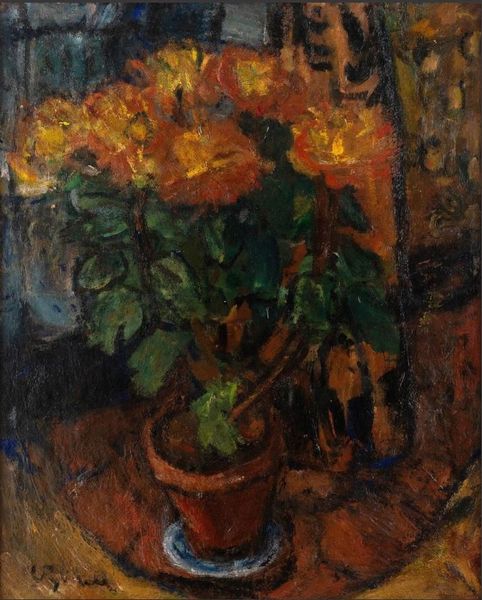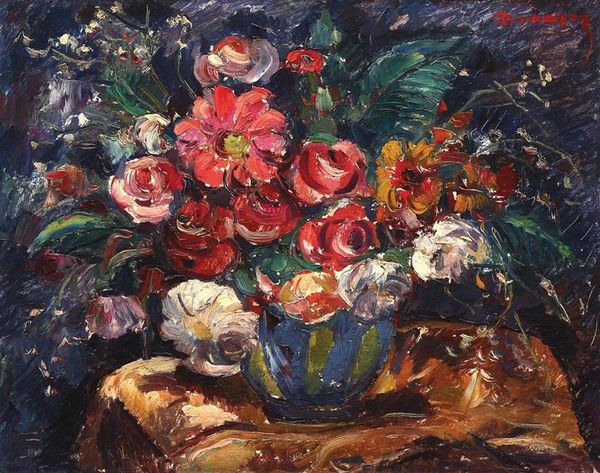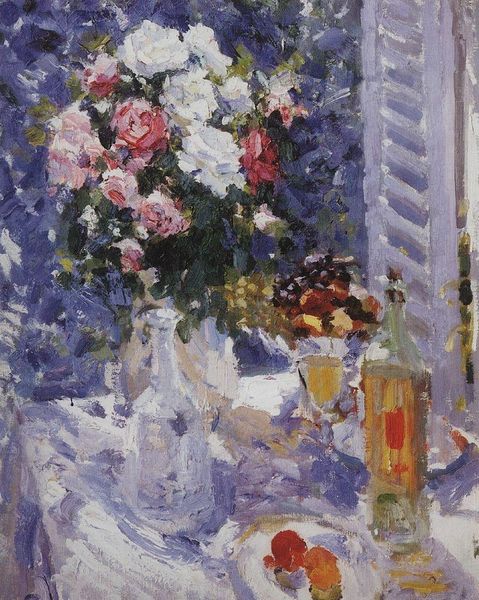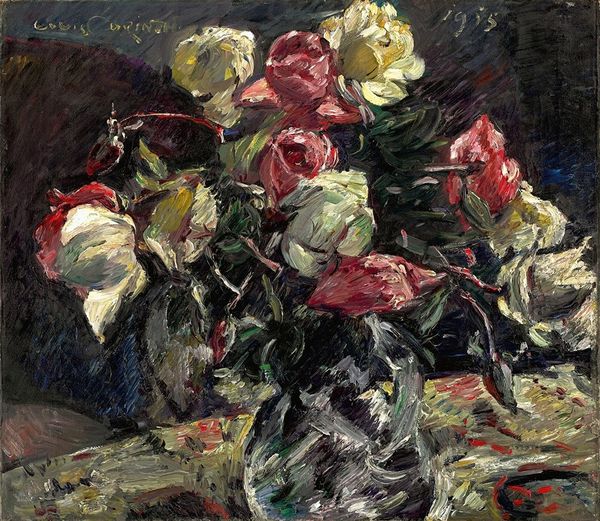
Copyright: Public domain
Curator: What strikes me first about Konstantin Korovin’s “Roses. Evening,” painted in 1908, is the hazy quality, the light seeming to dissolve the edges of things. Editor: Yes, it’s almost aggressively material, isn't it? Thick daubs of oil paint – you can practically smell the linseed. Look how the brushstrokes define the roses, a riot of red and white, but then the surrounding architecture melts into a grey blur. Curator: It certainly encapsulates a feeling, an evening mood, doesn’t it? The roses themselves, symbols of love and beauty, juxtaposed against a somewhat stark, industrial backdrop… it speaks to a transient beauty found amidst the everyday. There’s a tension there. Editor: I’m drawn to the way the support structure of what looks like a small veranda becomes this abstracted plane, these rhythmic horizontal marks built up out of individual loaded brush marks of gray tones and tans. And those quick jabs of white next to it—likely cheaper flowers that hold light differently—offer some counterpoint between luxury and function, or even cultivation and wildness. It’s clear this was made with a lot of medium and not a ton of finessing of pigment ratios. Curator: Absolutely. Roses, of course, carry centuries of symbolic weight – from classical depictions of Venus to Victorian notions of courtship. Placing them in this seemingly random, almost overlooked corner, democratizes the symbolism, making it less precious, more accessible. Do you think there's a connection with his set designs? Editor: Quite possibly, it really underscores a studio-centric method. If one looks at the means of Korovin’s paintings generally—which feature similar brush-handling and emphasis on lighting and texture in interiors, still lifes, and other landscapes--we might begin to interpret it not merely as Impressionistic impulse but as a practical approach from someone working as an industrial artist. What a clever and subtle nod to modern labor practices in 1908! Curator: That's fascinating! Considering that Korovin’s style did pave the way for future Russian avant-garde artists to depict labor in factories—he's creating art accessible to common folks, rather than inaccessible and complex for the noble class. Editor: Indeed! In summary, I'm appreciating this as something much more complex, than simply a pretty arrangement of flowers and I wonder what more the material can reveal through technical analysis. Curator: Likewise, the symbolism is subtly powerful. Korovin, after all, doesn’t just depict flowers – he paints feeling.
Comments
No comments
Be the first to comment and join the conversation on the ultimate creative platform.
